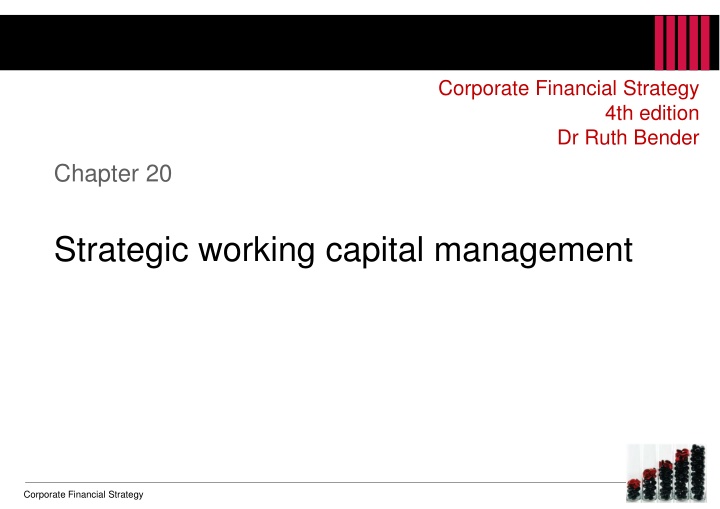
Strategic Working Capital Management in Corporate Financial Strategy
Explore the impact of working capital on sustainable growth, effective financing strategies, and risk management in different industries. Learn how to optimize working capital to enhance value potential and drive business success.
Download Presentation

Please find below an Image/Link to download the presentation.
The content on the website is provided AS IS for your information and personal use only. It may not be sold, licensed, or shared on other websites without obtaining consent from the author. If you encounter any issues during the download, it is possible that the publisher has removed the file from their server.
You are allowed to download the files provided on this website for personal or commercial use, subject to the condition that they are used lawfully. All files are the property of their respective owners.
The content on the website is provided AS IS for your information and personal use only. It may not be sold, licensed, or shared on other websites without obtaining consent from the author.
E N D
Presentation Transcript
Corporate Financial Strategy 4th edition Dr Ruth Bender Chapter 20 Strategic working capital management Corporate Financial Strategy
Working capital: contents Learning objectives Working capital affects sustainable growth The working capital cycle Working capital in different industries Risk and return in working capital The order-to-receipt cycle Funding requirements over time Cash flows in factoring 2 Corporate Financial Strategy
Learning objectives 1. Identify the components of working capital generated from a company s business model, and understand the impact of this on its growth and value potential. 2. Select appropriate financing strategies for a company s working capital needs. 3 Corporate Financial Strategy
Working capital affects sustainable growth g = return on investment retention ratio If working capital as a % of sales is reduced, g will increase 4 Corporate Financial Strategy
The working capital cycle Sale Stock manufacturing/ holding period Credit period taken by debtors Receive cash Buy goods Credit period allowed by creditors CASH CONVERSION PERIOD Operating Cycle 5 Corporate Financial Strategy
Working capital in different industries Manufacturer Working capital requirement Supermarket Negative Working capital Consultancy Working capital requirement Inventories Receivables Payables 6 Corporate Financial Strategy
Risk and return in working capital Risk avoided by holding working capital Cost of the working capital investment Inventories Stock-outs delaying the manufacturing process Loss of customers who cannot wait for delivery Cash tied up in stock Costs of holding stock (incl. warehousing, insurance, damage, obsolescence, pilfering, as well as the financial cost) Receivables Loss of customers due to more attractive opportunities elsewhere Creditors Too heavy reliance on bank finance Credit control costs and bad debts Cash tied up in receivables Poor name in the industry Charged higher prices 7 Corporate Financial Strategy
The order-to-receipt cycle Set terms & conditions Receive order Order fulfilment Invoicing Collection procedures Cash processing and banking 8 Corporate Financial Strategy
Funding requirements over time Funds needed Overdraft Cash on deposit Long-term debt Equity Time 9 Corporate Financial Strategy
Cash flows in factoring Company FacCo Customer 1 January Movement of goods/services Send invoice for 1,000 Send copy invoice 2 January Commission paid 10 Funds deposited in factoring account, 800 31 March Payment of invoice 1,000 Payment of balance of funds 200 Interest paid on 800 borrowed for 3 months at 10%, 20 (actually charged on a daily basis) 10 Corporate Financial Strategy
















